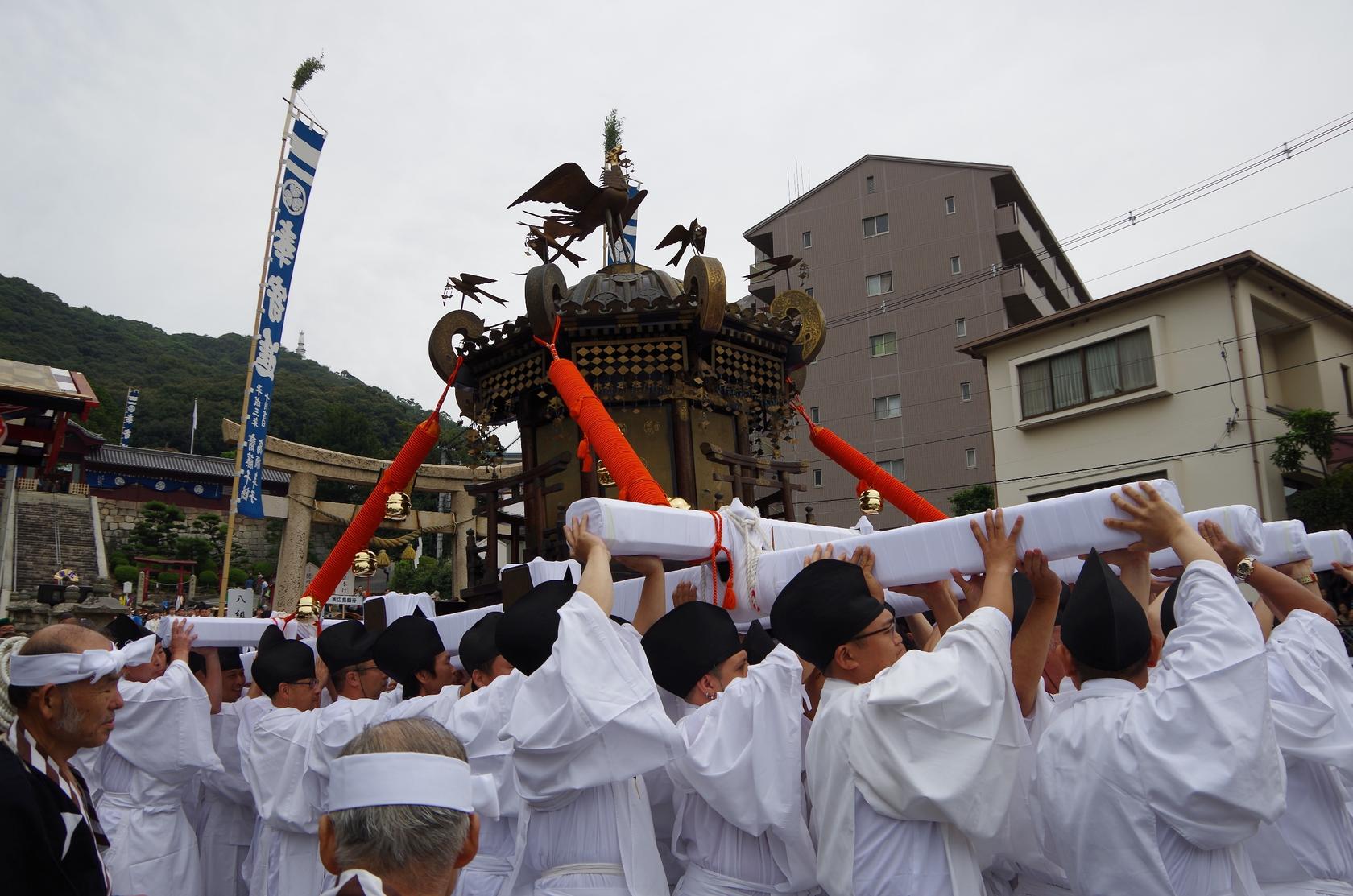Street Festival ("Tori Gosairei" festival)

Toshogu Shrine was constructed in Hiroshima in 1648 by Ieyasu's grandson and then lord of the Hiroshima Domain Asano Mitsuakira to a divine protection for the "Kimon" (the "devil's gate", a location in a castle superstitiously believed to be unlucky or a weak spot) of Hiroshima Castle, and a "street festival" consisting of a parade of 2,000 people and centered around a "omikoshi (grand portable shrine) belonging to Toshogu Shrine was held every 50 years since Ieyasu's death.
This was covered in the Hiroshima regional geographical journal "Chishinshu", and was considered one of the most representative festivals of Hiroshima, carried out by the government and the people together, with participation from both townspeople and ruling clan members, the appearance of "ishibikidai" floats from the town, and more. After the 4th occasion of the Street Festival in 1815, no more processions were held due to the disorder at the end of the Shogunate Government (5th occurrence), the First World War (6th occasion) and the atomic bombing of Hiroshima (6th time). On the occasion of the 350th anniversary of the founding of Hiroshima Toshogu Shrine in 1998, a citizen's committee was organized to revive the Hiroshima mikoshi portable shrine procession Street Festival. On the day, the event greatly exceeded expectations, drawing 50,000 people, and proving very inspirational.
Therefore, it has been decided to revive the Street Festival on the occasion of the 400th anniversary of the Hiroshima Toshogu Shrine. In addition, this year will also be the 70th anniversary of the atomic bomb, and the Street Festival has been discussed as a commemorative project for Hiroshima City, and through cooperation with the city and other parties, we are working to revive the festival in a form appropriate to the current times while still honoring tradition.
We hope to revive traditional culture lost as a result of the atomic bombing, ensure the continuance of the historical festival, and revitalize the local community by reviving the festival as a symbol of peace in the peaceful city of Hiroshima and as a solemn and grand celebration by widening our circle of cooperation.
